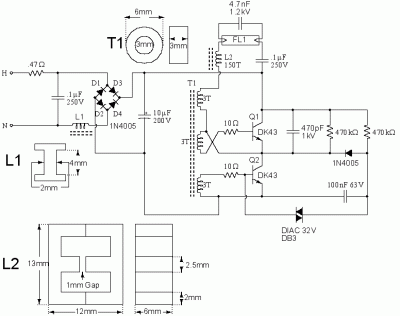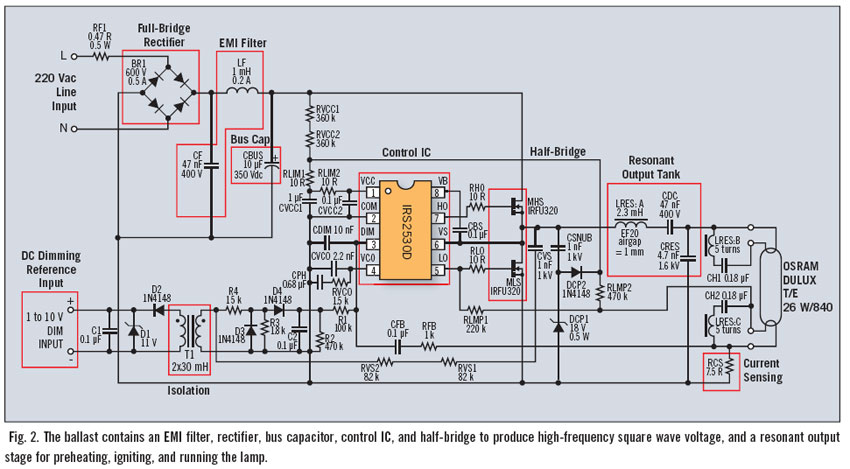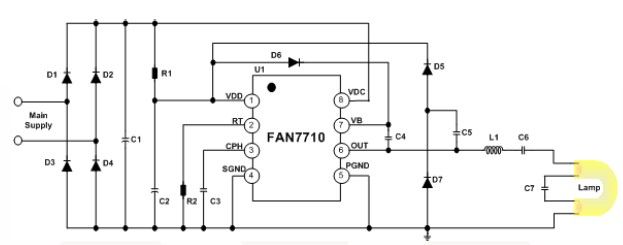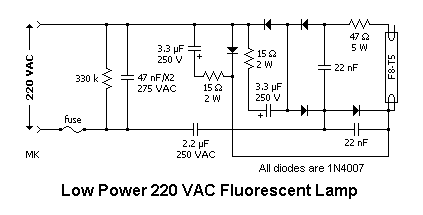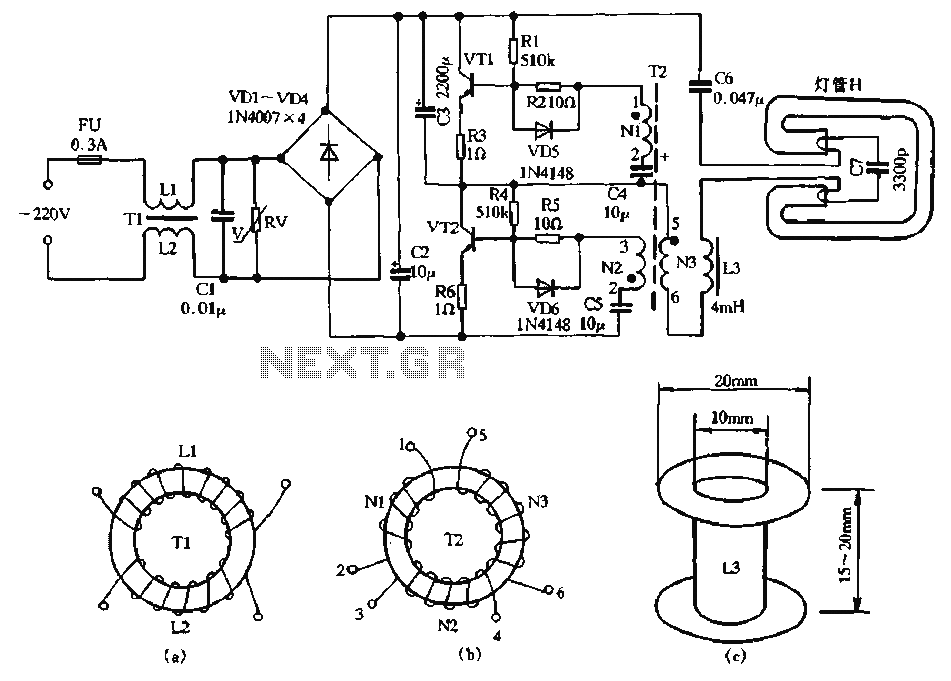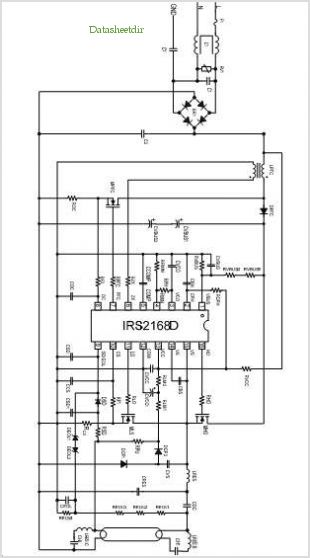
El-Cheapo Fluoro Ballast
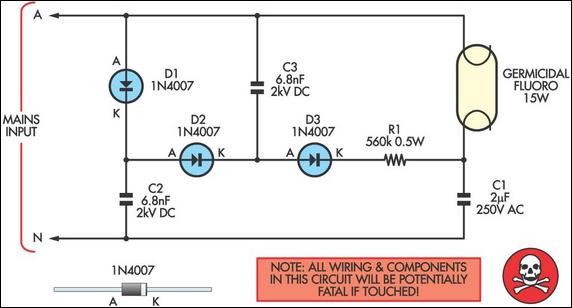
This simple circuit can start small (15W or less) fluorescent tubes, such as those used in PC board exposure and EPROM ultraviolet erasure boxes. The tube's filament heaters are not utilized. Instead, ignition is provided by a voltage tripler formed by diodes D1-D3 and two 6.8nF 2kV capacitors. Upon switch-on, capacitor C1 charges up through resistor R1 until the gas in the tube breaks down (around 700V). C1 then discharges through the tube, reducing the resistance sufficiently to maintain a continuous AC current flow. C1 continues to function as the ballast, with R1 included to prevent the three diodes from shunting the tube during positive mains half-cycles.
This circuit is designed to efficiently ignite small fluorescent tubes without relying on the traditional filament heating method. The use of a voltage tripler circuit, consisting of three diodes (D1-D3) and high-voltage capacitors (6.8nF, rated at 2kV), allows for the generation of the necessary high voltage to initiate the gas discharge within the tube.
When the circuit is powered, capacitor C1 begins to charge through resistor R1. The charging process continues until the voltage across C1 reaches approximately 700V, which is the threshold voltage required for the gas inside the fluorescent tube to ionize. At this point, the gas breakdown occurs, and C1 discharges its stored energy into the tube. This discharge creates a conductive path, allowing AC current to flow through the tube, which is essential for its operation.
Once the tube is ignited, capacitor C1 serves a dual purpose. It not only continues to provide the necessary voltage to keep the tube lit but also acts as a ballast to regulate the current flowing through the tube. The inclusion of resistor R1 is critical; it ensures that the diodes do not shunt the tube during the positive half-cycles of the mains voltage, which could disrupt the operation of the circuit.
Overall, this circuit exemplifies a compact and effective solution for driving small fluorescent tubes, utilizing a combination of capacitive and resistive elements to achieve reliable ignition and sustained operation.This simple circuit can start small (15W or less) fluorescent tubes such as those used in PC board exposure and EPROM ultraviolet erasure boxes. As you can see, the tube`s filament heaters are not used. Instead, ignition is provided by a voltage tripler formed by diodes D1-D3 and the two 6. 8nF 2kV capacitors. At switch on, C1 charges up via R1 unt il the gas in the tube breaks down (around 700V). C1 then discharges through the tube, lowering the resistance enough to sustain continual AC current flow. C1 then continues to act as the ballast, with R1 included to prevent the three diodes shunting the tube on positive mains half-cycles.
🔗 External reference
This circuit is designed to efficiently ignite small fluorescent tubes without relying on the traditional filament heating method. The use of a voltage tripler circuit, consisting of three diodes (D1-D3) and high-voltage capacitors (6.8nF, rated at 2kV), allows for the generation of the necessary high voltage to initiate the gas discharge within the tube.
When the circuit is powered, capacitor C1 begins to charge through resistor R1. The charging process continues until the voltage across C1 reaches approximately 700V, which is the threshold voltage required for the gas inside the fluorescent tube to ionize. At this point, the gas breakdown occurs, and C1 discharges its stored energy into the tube. This discharge creates a conductive path, allowing AC current to flow through the tube, which is essential for its operation.
Once the tube is ignited, capacitor C1 serves a dual purpose. It not only continues to provide the necessary voltage to keep the tube lit but also acts as a ballast to regulate the current flowing through the tube. The inclusion of resistor R1 is critical; it ensures that the diodes do not shunt the tube during the positive half-cycles of the mains voltage, which could disrupt the operation of the circuit.
Overall, this circuit exemplifies a compact and effective solution for driving small fluorescent tubes, utilizing a combination of capacitive and resistive elements to achieve reliable ignition and sustained operation.This simple circuit can start small (15W or less) fluorescent tubes such as those used in PC board exposure and EPROM ultraviolet erasure boxes. As you can see, the tube`s filament heaters are not used. Instead, ignition is provided by a voltage tripler formed by diodes D1-D3 and the two 6. 8nF 2kV capacitors. At switch on, C1 charges up via R1 unt il the gas in the tube breaks down (around 700V). C1 then discharges through the tube, lowering the resistance enough to sustain continual AC current flow. C1 then continues to act as the ballast, with R1 included to prevent the three diodes shunting the tube on positive mains half-cycles.
🔗 External reference
